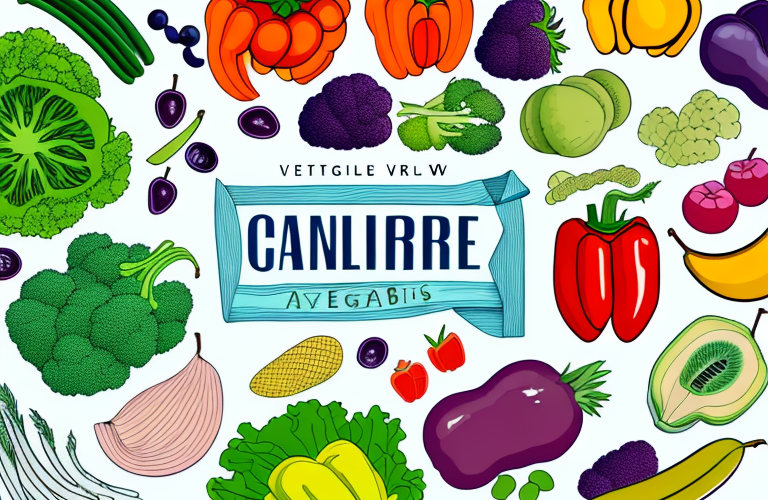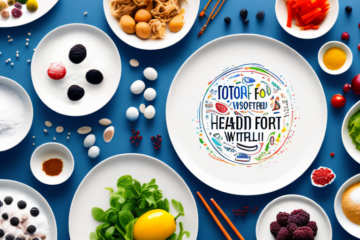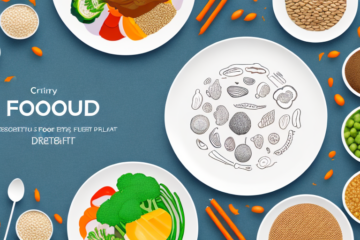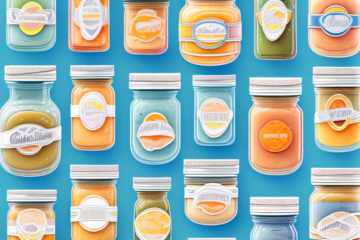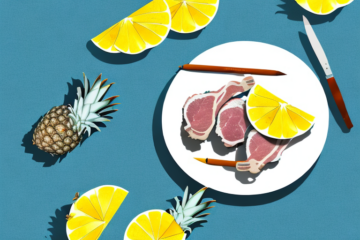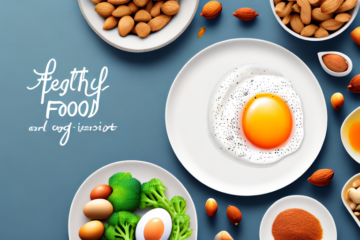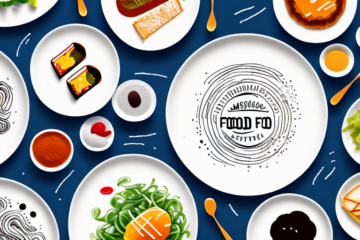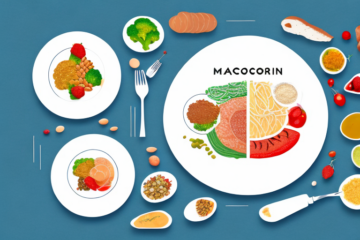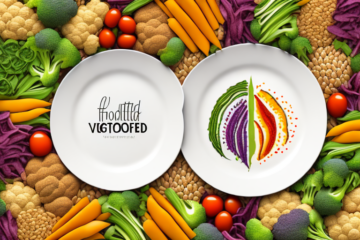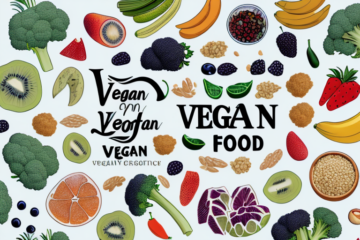If you’re looking to reduce your carb intake, whether for weight loss or other health reasons, it can be tough to know where to start. After all, carbs are in so many foods! But don’t worry, we’ve got you covered. In this article, we’ll walk you through everything you need to know about no and low carb diets, and we’ll give you a comprehensive list of 100 foods you can enjoy while still keeping your carb count in check.
Introduction to No and Low Carb Diets
No carb and low carb diets have gained popularity in recent years as a way to manage weight, control blood sugar levels, and improve overall health. While there’s no one-size-fits-all approach when it comes to nutrition, many people find success in reducing their carb intake. But what exactly does it mean to follow a no or low carb diet? A no carb diet typically involves cutting out all sources of carbohydrates, while a low carb diet prioritizes foods that are low on the glycemic index, meaning they won’t spike your blood sugar levels.
It’s important to note that while no and low carb diets can be effective for weight loss and blood sugar control, they may not be suitable for everyone. Those who engage in high-intensity exercise or have certain medical conditions may require a higher carb intake for optimal performance and health. It’s also important to focus on consuming nutrient-dense foods and not just cutting out carbs, as a diet lacking in essential vitamins and minerals can have negative health consequences. As with any dietary change, it’s best to consult with a healthcare professional before making significant changes to your eating habits.
Benefits of a No/Low Carb Diet
There are many potential benefits of reducing your carb intake. For one, it can help with weight loss. When you eat carbs, your body converts them into glucose, which can be used for energy or stored as fat. By reducing your carb intake, you’re forcing your body to use fat for fuel instead, which can result in weight loss. Additionally, cutting back on carbs has been shown to improve insulin sensitivity, lower inflammation levels, and even potentially reduce the risk of chronic diseases like heart disease and type 2 diabetes.
Another benefit of a no/low carb diet is that it can help control hunger and cravings. Carbs are known to spike blood sugar levels, which can lead to a crash and subsequent hunger pangs. By reducing carb intake, you can avoid these spikes and crashes, leading to more stable blood sugar levels and fewer cravings.
Furthermore, a no/low carb diet can also improve brain function. Studies have shown that reducing carb intake can lead to increased mental clarity and focus, as well as improved memory and cognitive function. This is because the brain can use ketones, which are produced when the body burns fat for fuel, as an alternative source of energy.
The Science Behind Carbohydrates
Carbohydrates are one of the three macronutrients, along with protein and fat. They’re found in a wide variety of foods, including grains, fruits, vegetables, and dairy products. When you eat carbs, your body breaks them down into glucose, which is used for energy. However, not all carbs are created equal. Some carbs, like refined sugars and white bread, are quickly absorbed by the body and can cause a rapid spike in blood sugar levels. Other carbs, like those found in vegetables and whole grains, are digested more slowly and won’t cause such a sharp increase in blood sugar.
Carbohydrates are essential for providing energy to the body. They are the primary source of fuel for the brain and muscles. Without enough carbs in your diet, you may feel fatigued and have difficulty concentrating. However, it’s important to consume the right types of carbs in the right amounts. Consuming too many carbs can lead to weight gain and other health problems.
Carbohydrates also play a role in gut health. Certain types of carbs, known as prebiotics, are not digested by the body but instead feed the beneficial bacteria in the gut. These bacteria help to maintain a healthy digestive system and can even boost the immune system. Foods that are high in prebiotics include garlic, onions, bananas, and asparagus.
Understanding Net Carbs and Glycemic Index
When it comes to tracking carbs, it’s important to understand the concept of net carbs. Net carbs are calculated by subtracting fiber and sugar alcohols from the total carb count. The reason for this is that fiber and sugar alcohols aren’t digested in the same way as other carbs, so they don’t have the same effect on blood sugar levels. Additionally, the glycemic index is a tool used to rate how quickly a particular food will raise your blood sugar levels. Low glycemic index foods are typically recommended on a low carb diet, as they won’t cause such a sharp spike in blood sugar.
It’s important to note that not all carbohydrates are created equal. Some carbs, like those found in fruits and vegetables, are considered “good” carbs because they are packed with nutrients and fiber. On the other hand, “bad” carbs, like those found in sugary drinks and processed foods, can lead to weight gain and other health problems. When following a low carb diet, it’s important to focus on consuming mostly good carbs and limiting your intake of bad carbs.
In addition to tracking net carbs and glycemic index, it’s also important to pay attention to portion sizes. Even if a food is low in carbs, eating too much of it can still lead to weight gain. It’s recommended to use measuring cups or a food scale to ensure you’re eating the appropriate amount of food for your goals.
Foods to Avoid on a No/Low Carb Diet
When following a no or low carb diet, there are certain foods you’ll need to avoid. High-carb foods like bread, pasta, rice, and potatoes are obvious culprits. But there are also other foods that may contain hidden carbs, like sugary drinks, candy, and some fruits. You’ll also want to read labels carefully and avoid processed foods that contain added sugar or refined carbohydrates.
In addition to the foods mentioned above, it’s important to avoid certain condiments and sauces that are high in sugar and carbs. Ketchup, barbecue sauce, and sweet chili sauce are just a few examples of condiments that can quickly add up in carbs. It’s best to opt for low-carb alternatives like mustard, hot sauce, or mayonnaise. Another food to avoid on a no/low carb diet is beer, as it is high in carbs and can quickly derail your progress. Instead, opt for low-carb alcoholic beverages like vodka or gin mixed with soda water and a splash of lime juice.
Top 10 No Carb Foods to Incorporate in Your Diet
If you’re following a no carb diet, it’s important to make sure you’re getting enough nutrients. While many foods contain some amount of carbs, there are still plenty of no carb options that will provide you with essential vitamins and minerals. Here are 10 no carb foods to consider incorporating into your diet:
- Steak
- Chicken
- Fish
- Eggs
- Bacon
- Spinach
- Mushrooms
- Broccoli
- Cauliflower
- Avocado
It’s important to note that while these foods are all no carb, they still contain calories. It’s important to maintain a balanced diet and not rely solely on these foods. Additionally, it’s important to consult with a healthcare professional before making any significant changes to your diet.
Top 10 Low Carb Foods to Incorporate in Your Diet
While no carb diets are very restrictive, there’s still plenty of room for variety on a low carb diet. By prioritizing foods that are low on the glycemic index, you can still enjoy a wide variety of foods while keeping your carb count in check. Here are 10 low carb foods to consider incorporating into your diet:
- Leafy greens like kale, spinach, and arugula
- Cruciferous vegetables like broccoli, cauliflower, and Brussels sprouts
- Berries like strawberries, raspberries, and blackberries
- Nuts and seeds like almonds, walnuts, and chia seeds
- Lean proteins like chicken, turkey, and fish
- Non-starchy vegetables like bell peppers, zucchini, and cucumber
- Full-fat dairy products like cheese and yogurt
- Healthy fats like olive oil and avocado oil
- Legumes like black beans and chickpeas (in moderation)
- Dark chocolate (in moderation)
It’s important to note that while these foods are low in carbs, portion control is still key. Overeating any food, even if it’s low in carbs, can still lead to weight gain. Additionally, it’s important to consult with a healthcare professional before making any significant changes to your diet, especially if you have any underlying health conditions.
The Best Vegetables for a No/Low Carb Diet
Vegetables are an important part of any healthy diet, but when you’re watching your carb intake, it’s important to choose wisely. While starchy vegetables like potatoes and corn are high in carbs, there are still plenty of delicious veggies you can enjoy. Here are some of the best vegetables for a no or low carb diet:
- Leafy greens like spinach, kale, and lettuce
- Cruciferous vegetables like broccoli, cauliflower, and Brussels sprouts
- Asparagus
- Mushrooms
- Zucchini
- Bell peppers
- Cucumbers
- Tomatoes (in moderation)
- Eggplant
- Artichokes
It’s important to note that while these vegetables are low in carbs, they are also packed with important nutrients like vitamins, minerals, and fiber. Leafy greens, for example, are a great source of vitamin K, which is important for bone health, while cruciferous vegetables contain compounds that may help protect against cancer. So not only are these veggies great for your waistline, they’re also great for your overall health!
The Best Fruits for a No/Low Carb Diet
Fruits are a great source of vitamins and fiber, but many are high in carbs. The key is to choose fruits that are lower in sugar and higher in fiber, as these won’t cause as much of a blood sugar spike. Here are some of the best fruits for a no or low carb diet:
- Berries like strawberries, raspberries, and blackberries
- Avocados (yes, they’re a fruit!)
- Tomatoes (yes, they’re a fruit too)
- Lemons and limes (great for adding flavor to water)
- Olives
- Coconut (in moderation)
It’s important to note that while these fruits are lower in carbs, they should still be consumed in moderation. It’s also important to pay attention to portion sizes and to consider the overall balance of your diet. Incorporating a variety of fruits and vegetables can help ensure that you’re getting all the nutrients your body needs.
Low Carb Snacks for On-The-Go
Snacking can be a challenge on a no or low carb diet, as most convenience foods are high in carbs. However, with a little bit of planning, you can still enjoy plenty of tasty snacks. Here are some low carb snack options to consider:
- Raw vegetables like sliced cucumbers, bell peppers, and cherry tomatoes with hummus
- Nuts and seeds
- Jerky (look for brands with minimal added sugar)
- Hard-boiled eggs
- Cheese sticks
- Edamame (in moderation)
- Low-sugar protein bars
- Dark chocolate (in moderation)
Another great low carb snack option is Greek yogurt with berries. Greek yogurt is high in protein and low in carbs, making it a great choice for a snack. Berries are also a good choice because they are low in carbs and high in fiber, which can help keep you feeling full.
If you’re looking for a more substantial snack, consider making your own trail mix. Mix together some nuts, seeds, and a small amount of dried fruit for a tasty and filling snack. Just be sure to watch your portion sizes, as nuts and dried fruit can be high in calories.
Dairy Products that are Low in Carbs
Dairy products can be a great source of calcium and protein, but many are also high in carbs. Here are some low-carb dairy options to consider:
- Hard cheeses like cheddar, Swiss, and Parmesan
- Soft cheeses like brie and goat cheese
- Cottage cheese
- Sour cream
- Butter
- Heavy cream (in moderation)
It’s important to note that not all dairy products are created equal when it comes to carb content. For example, milk and yogurt can be high in carbs due to their natural sugars. However, there are low-carb alternatives available, such as almond milk and Greek yogurt.
Additionally, some dairy products may be processed and contain added sugars or fillers that can increase their carb content. It’s important to read labels and choose products that are minimally processed and free from added sugars.
Non-Dairy Sources of Protein for a No/Low Carb Diet
If you’re following a no or low carb diet and are also avoiding dairy, you’ll need to look for other sources of protein. Here are some non-dairy options to consider:
- Meat and poultry
- Fish and seafood
- Eggs
- Tofu and tempeh
- Nuts and seeds
- Pea protein powder
- Soy milk (in moderation)
It’s important to note that some non-dairy sources of protein may also contain carbohydrates, so it’s important to check the nutrition labels and track your intake if you’re following a strict low carb diet. Additionally, incorporating a variety of protein sources can help ensure you’re getting all the essential amino acids your body needs for optimal health.
Beverages that are Low in Carbs
Staying hydrated is important, but many beverages are loaded with sugar and carbs. Here are some low-carb beverage options to consider:
- Water (still or sparkling)
- Black coffee (no added sugar)
- Unsweetened tea (hot or iced)
- Diet soda (in moderation)
- Almond milk (unsweetened)
- Coconut water (in moderation)
It’s important to note that while these beverages are low in carbs, they may not be suitable for everyone. For example, individuals with nut allergies should avoid almond milk, and those with kidney problems should limit their intake of coconut water due to its high potassium content. It’s always best to consult with a healthcare professional to determine which beverages are best for your individual needs.
Tips for Eating Out on a No/Low Carb Diet
Eating out can be a challenge on a no or low carb diet, as many restaurant dishes are loaded with carbs. However, with a little bit of planning and communication with your server, you can still enjoy a delicious meal. Here are some tips for eating out while watching your carb intake:
- Choose a protein-based dish (like steak or chicken) and ask for extra veggies instead of carb-heavy sides
- Ask for dressings and sauces on the side, and avoid anything that’s sweetened with sugar
- Look for Mexican or Asian restaurants, as they often have low-carb options like fajitas or stir-fries
- Stick to water or unsweetened tea as your beverage
Another tip for eating out on a no or low carb diet is to research the restaurant’s menu beforehand. Many restaurants now have their menus available online, which can help you plan ahead and make informed choices. You can also call ahead and ask if they have any low-carb options or if they can accommodate your dietary needs.
It’s also important to be mindful of hidden carbs in dishes. For example, some sauces or marinades may contain hidden sugars or starches. Don’t be afraid to ask your server about the ingredients in a dish or to request modifications to make it more low-carb friendly.
How to Meal Prep for a No/Low Carb Diet
Meal prepping can save you time and reduce the urge to reach for quick, carb-heavy options when hunger strikes. Here are some tips for meal prepping on a no or low carb diet:
- Choose a protein source (like chicken or beef) and cook enough for the week
- Prep and chop your vegetables so they’re easy to grab and go
- Hard-boil eggs for a quick and easy snack
- Make a big batch of soup or chili and portion it out for the week
- Invest in food storage containers to keep your meals fresh
It’s important to note that a no or low carb diet doesn’t mean you have to completely eliminate carbs from your meals. Incorporating healthy, complex carbs like sweet potatoes, quinoa, and brown rice can provide important nutrients and fiber. Just be sure to portion them out appropriately and balance them with protein and vegetables.
Common Mistakes to Avoid on a No/Low Carb Diet
Reducing your carb intake can be tricky, and there are some common mistakes to watch out for. Here are a few things to avoid:
- Assuming all carbs are bad – there are still plenty of healthy carb options to choose from
- Eating too much protein – excess protein can be converted into glucose and spike insulin levels
- Not drinking enough water – staying hydrated is key to feeling your best
- Being too restrictive – a balanced, sustainable diet is key to long-term success
It’s important to note that a no/low carb diet may not be suitable for everyone. People with certain medical conditions, such as diabetes, may need to be cautious when reducing their carb intake. It’s always best to consult with a healthcare professional before making any significant changes to your diet.
Recipes for Delicious, No/Low Carb Meals
Finally, here are a few recipes to get you started on your no or low carb journey:
- Baked Lemon Pepper Chicken
- Grilled Salmon with Avocado Salsa
- Low Carb Beef Stroganoff
- Roasted Broccoli and Cauliflower Soup
- Kale and Feta Stuffed Portobello Mushrooms
- Low Carb Chocolate Brownies
With these tips and recipes, you’ll be well on your way to successfully reducing your carb intake. Remember, it’s all about balance and finding what works for you. Bon appetit!
One important thing to keep in mind when following a no or low carb diet is to make sure you’re still getting enough nutrients. This can be achieved by incorporating plenty of leafy greens, healthy fats, and protein sources into your meals. Some great options include spinach, kale, avocado, nuts, seeds, and lean meats like chicken and fish.
Another helpful tip is to plan your meals ahead of time. This can help you stay on track and avoid reaching for high carb snacks or meals when you’re feeling hungry and unprepared. Consider meal prepping on the weekends or making a weekly meal plan to ensure you have plenty of delicious, low carb options on hand throughout the week.

